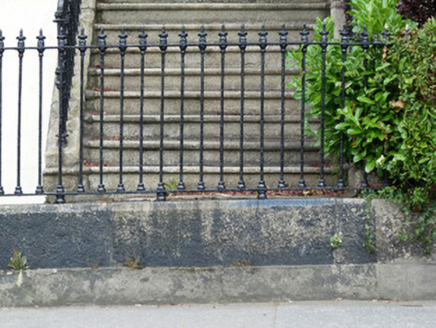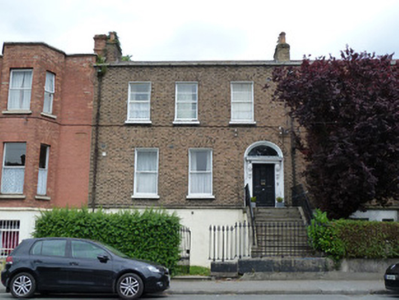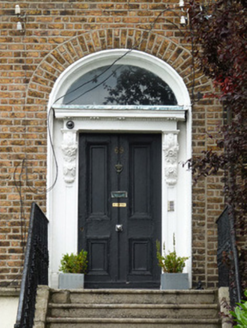Survey Data
Reg No
50060192
Rating
Regional
Categories of Special Interest
Architectural, Artistic
Previous Name
Altinure Terrace
Original Use
House
In Use As
Apartment/flat (converted)
Date
1840 - 1860
Coordinates
314434, 235899
Date Recorded
26/08/2014
Date Updated
--/--/--
Description
Terraced three-bay two-storey former house over raised basement, built c.1850. Now converted to apartments. Double span pitched roof hidden behind brick parapet wall with granite coping. Brick chimneystacks to party walls with cast-iron rainwater goods. Brown brick laid in Flemish bond to ground and first floors with granite plinth course over rendered basement walling. Square-headed window openings with brick voussoirs and rendered reveals, granite sills and timber sliding sash windows, one-over-one pane to ground floor, horizontally divided two-over-two pane to first floor and three-over-three pane with iron window guards to basement. Round-headed door opening with brick voussoirs and moulded surround. Timber bolection-moulded four-panelled door flanked by timber panelled pilasters with carved foliate console brackets supporting timber dentil frieze and cornice with plain fanlight. Granite platform with cast-iron bootscrape. Nosed granite steps with cast-iron balusters and wrought-iron handrail. Cast-iron railings on moulded granite plinth wall to front and cast-iron pedestrian gate.
Appraisal
The architectural form of the houses of Cabra Road is derived from the Dublin townhouse, though on a more modest scale due to its location at the edge of the city. The basement is raised allowing the inclusion of a front garden area. The survival of the cast-iron railings and pedestrian gates which bounded the garden areas provides a sense of enclosure marking out the private space associated with each house. The terrace named 'Cabra Parade' on the early Ordnance Survey maps is well-composed, maintaining a unified parapet line and window alignment. Some slight variations in design are evident, in this case the inclusion of a third bay, possibly indicating the work of individual builders or developers. Much of the early fabric is retained including the cast-iron railings, bootscrapers, granite steps and brickwork.





